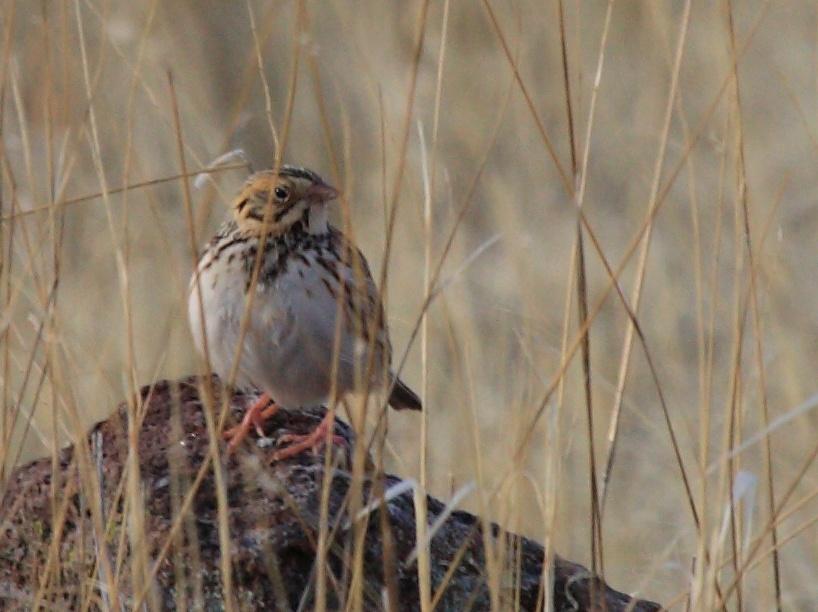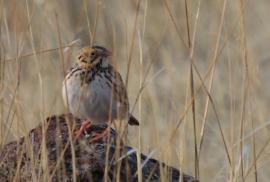Guide to Boreal Birds
Overview
This elegant sparrow was first described in 1844 by Audubon, who named it after Spencer F. Baird, 19th-century ornithologist and Secretary of the Smithsonian Institution. Of all grassland sparrows, Baird's is the most reluctant to fly, and when flushed, slips through the grass like a mouse. The total population of Baird's Sparrows is small, and once they leave the breeding grounds they are difficult to find. Even on the breeding grounds, one must search hard for the habitat that suits them, but a few singing males usually can be found there, often perched on the tips of weed stalks.
Description
5-5 1/2" (13-14 cm). A pale streaked sparrow. Whitish below; breast crossed by a band of narrow black streaks; bright ocher crown stripe.
Voice
3 short notes followed by a musical trill on a lower pitch.
Nesting
3-5 white eggs, blotched and scrawled with dark brown, in a cup of weed stems and grass, concealed in grass or weeds on the ground.
Habitat
Dry upland prairies.
Range/Migration
Breeds from Saskatchewan and Manitoba south to Montana and Minnesota. Winters in Texas, Arizona, and northern Mexico.



